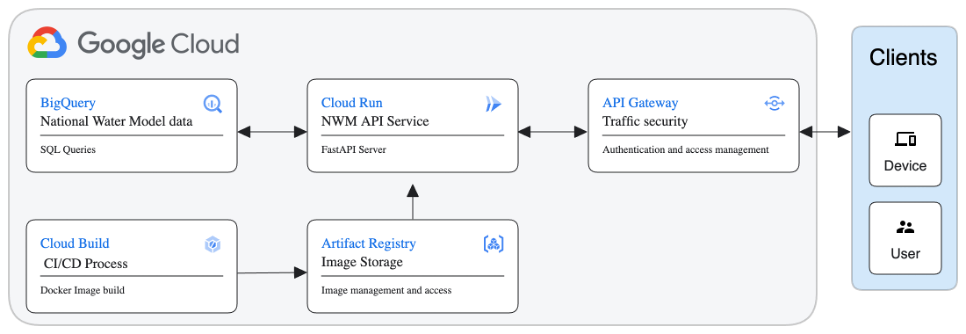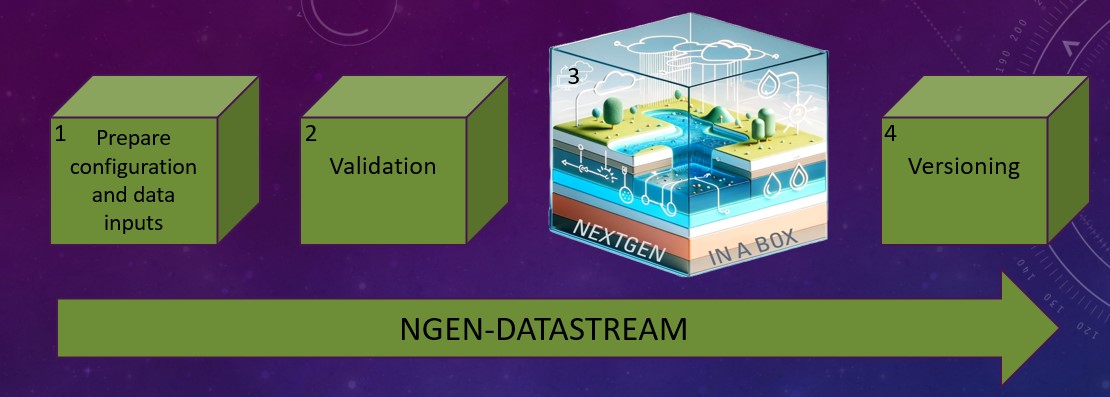Accessing National Water Model (NWM) Data via Google Cloud BigQuery API
 Image Source: https://github.com/BYU-Hydroinformatics/api-nwm-gcp
Image Source: https://github.com/BYU-Hydroinformatics/api-nwm-gcp
Several important historical and ongoing National Water Model (NWM) datasets are now available on Google Cloud BigQuery, which makes them queryable through SQL using Google Cloud console. Some of these data sets are also accessible through an API (e.g. using Python). These datasets and their current status are as follows:
| Product | Cloud Console SQL | CIROH API | Historical | Daily Updates |
| Medium-range forecasts | X | X | X | X |
| Long-range forecasts | X | X | X | X |
| Analysis and Assimilation | X | X | X | X |
| Retrospective Data (NWM v3) | X | X | ||
| Return Periods | X | X |
